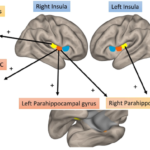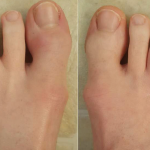CHICAGO—Results from nearly 200 studies being conducted on psoriatic arthritis (PsA) were presented at ACR Convergence 2025. What research on PsA has the greatest potential to make a positive impact on clinical care or treatment options, or serve as the basis for future research? That’s the question The Rheumatologist asked me to explore. So I scoured the abstracts and posters presented at the annual meeting. Below, you’ll find highlights from the research on PsA presented this year, with comments on why I think it has the potential to affect how we care for our patients.
Read on.
1. Anti-PAD2 Autoantibodies
Orbai et al., Abstract 05291
A PsA diagnosis is frequently considered for a patient with polyarthritis who is seronegative, signifying the absence of either rheumatoid factors (RFs) or antibodies to citrullinated proteins (ACPAs or anti-CCP). Although seronegativity could suggest a mechanism other than autoimmunity, studies on patients with psoriasis (PsO) and PsA have demonstrated both B and T cell autoreactivity to a molecule known as LL37; LL37 is an anti-microbial peptide that is a member of the cathelicidin family. Further, sera of patients with PsA show antibody reactivity to post-translationally modified (PTM) forms of LL37. These PTMs include citrullination and carbamylation; the production of antibodies to PTMs is a characteristic of rheumatoid arthritis (RA). Citrullination is mediated by enzymes known as peptidylarginine deiminases (PADs), with the PAD2 enzyme effective in citrullinating LL37.
In this study, Orbai et al. used an enzyme-linked immunosorbent assay (ELISA) to determine the presence of anti-PAD2 antibodies in sera of 200 patients with PsA, as well as 75 controls. As the data indicated, 29% of PsA sera showed antibody reactivity to PDA2 compared with 9.3% of controls. In this population, anti-PAD2 antibodies were associated with more active joint disease and less active skin disease.
Although the role of autoantibodies in clinical manifestations of PsA will require further evaluation, studies such as this are important in identifying more decisively the presence of autoimmunity in PsA and showing that PsA is not actually “seronegative.” Further, the findings suggest a mechanistic link between RA and PsA because antibodies to PAD enzymes are present in both conditions. An interesting question is why an enzyme responsible for citrullination becomes a target autoantigen.
2. Risk of IBD with IL-17 Inhibitors
Tskitishvili et al., Abstract 11832
The treatment of PsA now involves a diverse array of conventional, biologic and targeted synthetic disease-modifying anti-rheumatic drugs (DMARDs). The biologic agents include antibodies to cytokines, such as tumor necrosis factor (TNF), interleukin (IL) 17, IL-23 and IL-12/23; biologics also include abatacept, which blocks T cell co-stimulation. Although the efficacy of anti-cytokine agents appears similar, these agents may differ in potential side effects. In particular, studies have suggested that agents that target IL-17 may be associated with either a new onset of inflammatory bowel disease (IBD) or exacerbation of pre-existing disease. In this study, Tskitishvili et al. investigated this association of IL-17 inhibition and IBD by performing a retrospective observational analysis of a large cohort of patients from the TriNetX research network. TriNetX has information on more than 130 million patients from around the world, providing a rich source of data for these investigations.



